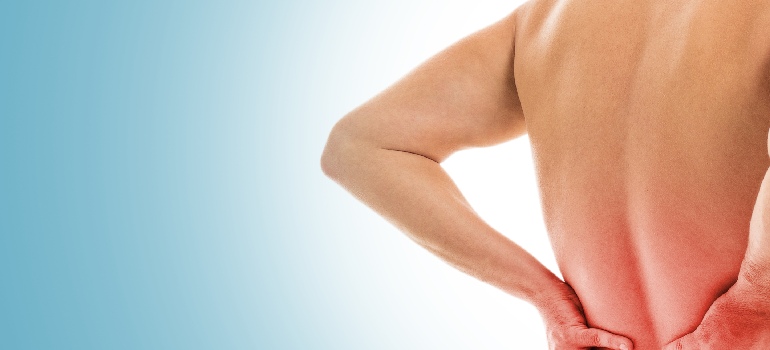Lower back pain can be caused by various factors, including muscle strains, herniated discs, poor posture, or underlying medical conditions.
Lower back pain can be caused by a range of factors, including:
Muscle Strains: Overuse or improper lifting techniques can strain the muscles in the lower back.
Herniated Discs: When the soft tissue inside the spinal disc pushes out through a tear or rupture, it can press on nerves and cause pain.
Spinal Stenosis: This is the narrowing of the spinal canal, which can put pressure on the spinal cord and nerves.
Scoliosis: Abnormal curvature of the spine can lead to lower back pain.
Arthritis: Conditions like osteoarthritis or ankylosing spondylitis can affect the lower back.
Poor Posture: Sitting or standing improperly for extended periods can strain the lower back.
Injuries: Accidents or trauma can cause damage to the lower back.
Underlying Medical Conditions: Conditions like kidney stones, infections, or endometriosis can also cause lower back pain.
Understanding the specific cause is crucial for effective treatment. Consulting a healthcare professional is recommended to diagnose the underlying issue and determine the most appropriate treatment plan.
Treatment options may include rest, physical therapy, pain medications, or in severe cases, surgery. Consult with a healthcare professional for a proper diagnosis and personalized treatment plan.
The optimal treatment for back pain depends on the underlying cause, but here are some general approaches:
1. Rest and Activity Modification: Rest can help in acute cases, but prolonged inactivity isn’t recommended. Modify activities to avoid exacerbating the pain.
2. Physical Therapy: A physical therapist can develop exercises to improve strength, flexibility, and posture.
3. Pain Medications: Over-the-counter or prescription medications can help manage pain and inflammation.
4. Heat and Cold Therapy: Applying heat or cold can provide relief. Cold is often used for acute pain, while heat is more effective for chronic pain.
5. Injections: In some cases, corticosteroid injections can reduce inflammation and pain.
6. Manual Therapy: Chiropractic care or massage therapy may be helpful for some individuals.
7. Lifestyle Changes: Improving posture, maintaining a healthy weight, and regular exercise can prevent or alleviate back pain.
8. Surgery: In severe cases, surgery may be necessary, such as for herniated discs, spinal stenosis, or spinal fusion.
9.Alternative Therapies: Acupuncture and mindfulness-based stress reduction can be considered.
It’s important to consult a healthcare professional for an accurate diagnosis and a tailored treatment plan.





